Numbers, Infinity, and Reality: An Interdisciplinary Undergraduate Philosophy of Mathematics Course
This article presents a model of an undergraduate course that brings together advanced topics in the philosophy, history, and sociology of mathematics. The aim is to showcase and encourage opportunities for fruitful collaboration between mathematics instruction and humanities curricula.
We begin with an overview of the course’s context and background, before describing its overall design. We then share three example topics based on readings from Paul Benacerraf (b. 1931), Marvin Jay Greenberg (1935–2017), and Amir Alexander (b. 1963), respectively. Details of four specific assignments and assessments used in two different versions of the course are provided next. We close with some reflections on the course, from both our perspective as instructors and that of our students.
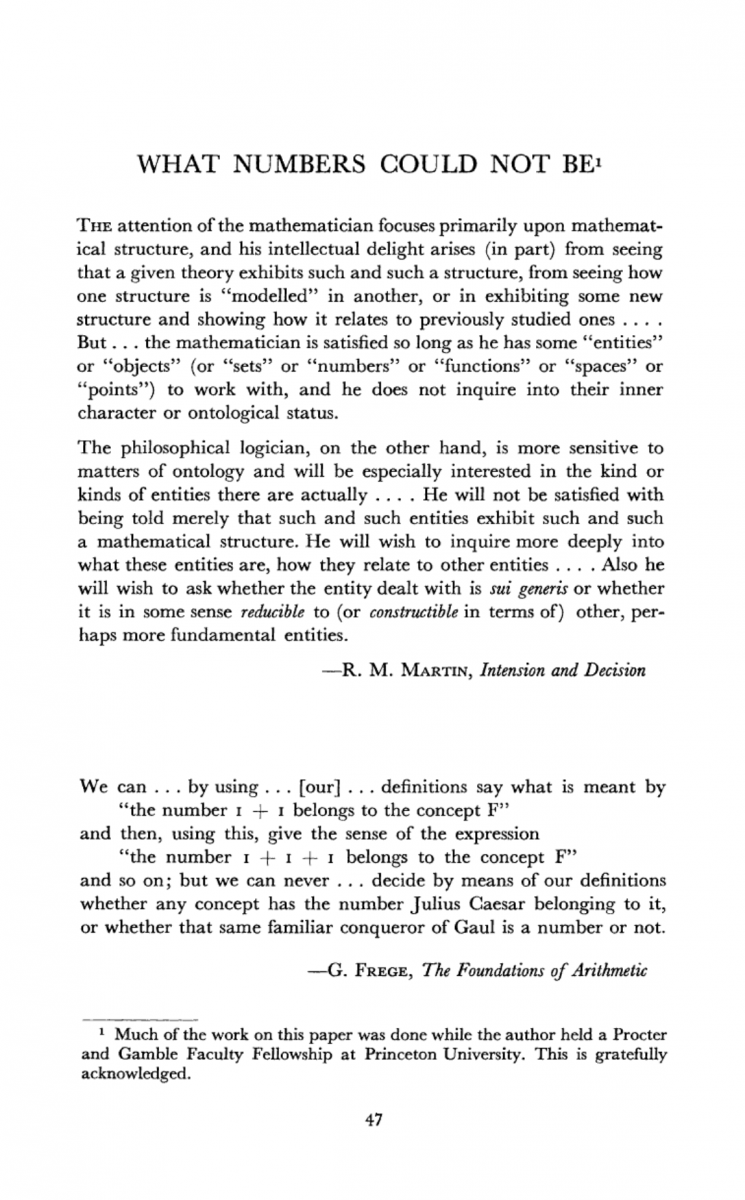
Figure 1. Benacerraf’s classic 1965 paper is a key text for the course. JSTOR.
Numbers, Infinity, and Reality: An Interdisciplinary Undergraduate Philosophy of Mathematics Course – Context and Background
The setting for the course Numbers, Infinity, and Reality is Converse University, which is a small, private university in Spartanburg, South Carolina. The co-instructors of this course are Kevin DeLapp and Jessica Sorrells. Jessica Sorrells, an associate professor of mathematics, holds a PhD in mathematics and has no formal training in the field of philosophy beyond a minor obtained during undergraduate studies. Kevin DeLapp is a professor of philosophy, holds a PhD in philosophy, and has no formal training in mathematics outside of philosophical logic.

Figure 2. Wilson Hall at Converse University. By PegasusRacer28, CC BY-SA 4.0, via Wikimedia Commons.
Numbers, Infinity, and Reality has been offered twice to date, once in a four-week January term in 2019 and once in a thirteen-week Spring term in 2021. In January 2019 the course was traditional, and in Spring 2021 it was designated as an honors course under Converse's Nisbet Honors Program. In both cases the course drew mathematics majors, philosophy majors, and students who were neither. Both iterations of the course were offered for three credit hours. Students could choose whether they received general education credit (in either mathematics or philosophy), credit toward their mathematics or philosophy degrees, and/or honors program credit.
To date, the design of the course has been as follows: A typical class day consists of a combination of lecture and discussion. Students are assigned required reading for nearly every class meeting, with occasional films and videos integrated as in-class supplements. The instructors meet outside of class approximately once per week in order to prepare the subsequent week's activities, compare disciplinary perspectives on a topic, and share on their own reflections on the readings. Most days, course preparation loosely follows a four-step plan:
- First, initial reactions to the day's reading are briefly solicited from the entire class.
- Second, the instructors expound upon some key historical, conceptual, or technical aspect of the reading. Both instructors are involved in this task during each class meeting, although different readings usually necessitate one instructor taking more of the lead, with the other instructor contributing supplemental observations. This division of labor tends to be approximately 60/40 and alternates equally from day to day or unit to unit.
- Third, based on this exposition from the instructors, the students engage in an activity such as think-pair-share or a short problem set.
- Finally, class meetings conclude by reopening discussion and debate to the entire class, with occasional time also devoted to setting up any terminology or context that would be important for the next session's reading.
Numbers, Infinity, and Reality: An Interdisciplinary Undergraduate Philosophy of Mathematics Course – Course Design
The course Numbers, Infinity, and Reality aims to engage students with the following questions:
- What are numbers?
- What do we mean by infinity?
- How do we obtain mathematical knowledge?
- Does mathematics correspond with reality?
- Is mathematics invented or discovered?
- Who does (or gets to do) mathematics?
In addition to these specific questions, a more general aim of the course is to illuminate for students the many ways in which mathematics and philosophy have been, are, and should be intertwined.
Toward these ends, readings are selected with an eye toward accessibility for our different student constituencies while also being representative of the rigor and genre of each field. In addition, readings and topics are designed to provide balanced exposure to both disciplines. Readings have been grouped into the following units:
- Historical foundations: Examples from classical Greece and China are adduced to showcase how linguistic and political contexts mitigate the ways in which mathematics is conceived in diverse societies.
- Metaphysics and epistemology: Students are plunged into twentieth-century debates concerning the ontological status of mathematical entities and mathematical knowledge. Are such entities mind-independently real or socially constructed? What roles, if any, do deduction and intuition play in the acquisition and justification of mathematical beliefs?
- Axiomatization: Students are exposed to the ways that starting assumptions and governing metaphors can shape number theory, geometry, and the mathematics of infinity.
- Cross-disciplinary relationships: Students examine some of the ways that mathematics can be opposed to, subsumed by, or otherwise juxtaposed against discourses in the sciences, medicine, technology, and aesthetics.
- Sociological implications: Students reflect on prevalent stereotypes about mathematics, romantic mythologies of mathematicians, typical encounters with mathematics in primary and secondary education, and ways in which gender and racial identities can intersect with or complicate the access to and standing of mathematical institutions.
In the next section, we provide three case studies from our assigned readings to illustrate how these themes are addressed in the course.
Numbers, Infinity, and Reality: An Interdisciplinary Undergraduate Philosophy of Mathematics Course – Sample Topics and Readings
A full list of course texts we have used in one or both versions of the course Numbers, Infinity, and Reality is provided in the Appendix. Here we provide three case studies from our syllabus that have met with particular success and which illustrate especially exciting ways in which philosophy and mathematics can be integrated in the classroom.
Benacerraf
One of the key texts on our syllabus—one that became a touchstone for several subsequent readings, discussions, and assignments—is Paul Benacerraf's classic article “What Numbers Could Not Be” [Benacerraf 1965]. Benacerraf defends a type of anti-realism about numbers, arguing that numbers (at least as certain prominent set theorists have influentially conceived of them) cannot be real or objective, but are instead merely nominal or functional. His argument turns on pitting the set-theoretic formulations of number offered by Ernst Zermelo and John von Neumann against one another. As Benacerraf frames it, Zermelo defines a number as equivalent to the set containing all of its non-negative integer predecessors. Thus, for Zermelo, the number 1 should be understood as \(\{ \emptyset \}\), the number 2 is \(\{\emptyset, \{\emptyset\}\}\), the number 3 is \(\{\emptyset,\{\emptyset\},\{\emptyset, \{\emptyset\}\}\}\), etc. This means that, for instance, the number 17 has 17 members. Von Neumann, on the other hand, defines a number as equivalent to the singleton set containing the preceding integer. Thus, for Von Neumann, the number 1 should be understood as \(\{\emptyset\}\), the number 2 is \(\{\{\emptyset \}\}\), the number 3 is \(\{\{\{\emptyset \}\}\}\), etc. This means that the number 17 only has 1 member, viz., the number 16.

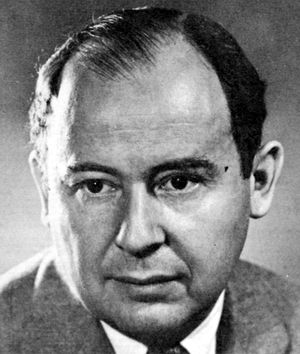
Figure 3. Ernst Zermelo (left) and John von Neumann (right). Convergence Portrait Gallery.
Benacerraf purports to demonstrate that these two ways of using set theory to formulate the essence of number yield divergent answers to questions such as, for example, whether 17 contains 3. For Zermelo, 17 would indeed contain 3, whereas for von Neumann it would not. Furthermore, Benacerraf argues that there is no non-arbitrary way to decide between these two competing formulations. If Benacerraf's argument is valid, then it would seem that we should either adopt an anti-realist or deflationary stance regarding numbers or abandon the set-theoretic conceit that cardinality exhausts the essence of number.
To provide the requisite background knowledge, students were assigned a brief problem set featuring basic set-theoretic definitions, notation, and examples. Additional in-class activities and lectures helped train students' intuitions about sets through the use of metaphors of containment. While these metaphors do pose difficulty when a more nuanced understanding of sets is required, they have served as an expedient way for students to gain sufficient understanding to engage with the fundamentals of sets and Benacceraf's argument.
Benacerraf's piece is an accessible and concise way to introduce the nomenclature and motivations for set theory to first-timers, and it also provides a powerful way to help mathematics and philosophy students alike appreciate how formal techniques can be leveraged to probe deep metaphysical questions.
Greenberg
Students are assigned to read excerpts from the textbook Euclidean and Non-Euclidean Geometries: Development and History by Marvin Jay Greenberg [Greenberg 2008], which weaves together an axiomatic development of Euclidean and non-Euclidean geometries alongside their respective histories. Prior to reading Greenberg, students have encountered Euclid's Elements, specifically the first 23 definitions and five postulates. The instructors place these texts into context with a brief oral history of the development of geometry from the time of Euclid up to the modern day. Our selection of these texts is intended to provide temporal contrast between two axiomatic developments of Euclidean geometry. Greenberg's Chapter 3 describes the “flaws” in Euclid from an axiomatic standpoint and goes on to develop a modern set of axioms to define a Hilbert plane. About half of the class discussion focuses on Greenberg's presentation of the axioms of “incidence” and “betweenness,” with the other half revolving around how Euclid's fifth postulate would enter into this fold. Students are enabled to discuss the merits of separating visual and/or physical representations of geometric objects from formal definitions. To underscore the virtues of precision and specificity in mathematics, and to demonstrate the slippery nature of Euclid's fifth postulate, we incorporate a hands-on activity as well as video content.
Styrofoam Globe Activity: For the hands-on activity, students are given Styrofoam spheres and rubber bands. First, students are asked what constitutes a straight line on the surface of a sphere. Students attempt to draw a line on the surface of the Styrofoam sphere and conclude that the result is a “great circle,” with one familiar example being a line of longitude on a globe. Students quickly surmise that a geometry of points and lines might harbor different properties if the lines are circular. The instructors then prompt students to reconsider the axioms of incidence and betweenness from Greenberg in the context of points and “lines” on a sphere. Quickly, students see that the incidence axioms hold but some of the betweenness axioms fail. The circular nature of the lines on a sphere can also prompt a discussion on infinity, as students can consider whether or not great circles should be considered to have infinite length. This relates directly to one of the betweenness axioms, as well.
Hyperbolic Geometry Video Content: A wonderful addition to in-class discussion is Margaret Wertheim's TEDEd talk that describes the discovery of models of hyperbolic geometry in the form of crocheted surfaces and coral reefs [Wertheim 2009]. Wertheim provides a brief overview of Euclidean, spherical, and hyperbolic geometries and specifically demonstrates the failure of the Euclidean parallel postulate on a crocheted hyperbolic surface. Wertheim's quip that “feminine handicraft” is responsible for the first constructed physical model of hyperbolic geometry primes students for later conversations addressing the historically undervalued contributions of women and racial minorities to mathematics.

Figure 4. Margaret Wertheim with crocheted coral reef display. www.margaretwertheim.com.
Alexander
Some of the most stimulating class discussions we have enjoyed have been inspired by an article by the historian Amir Alexander, “Tragic Mathematics: Romantic Narratives and the Refounding of Mathematics in the Early Nineteenth Century” [Alexander 2006]. Alexander's text introduces students to sensational(ized) episodes from the lives of the nineteenth-century mathematicians Évariste Galois, Niels Henrik Abel, and János Bolyai. Such hagiographies stem from and reinforce a picture of the successful mathematician as a heroic genius who suffers from being tragically misunderstood and is subject to Faustian agony in the face of esoteric intuitions.
Equipped with these historical anecdotes, students are encouraged to confront Alexander's thesis that “mathematical stories and mathematical practice are linked” by examining the tropes about math and mathematicians represented in popular consciousness today. Particular contemporary examples include the portraits of mathematical practice and psychology depicted in films such as Good Will Hunting (1997), Pi (1998), A Beautiful Mind (2001), Proof (2005), The Theory of Everything (2014), and Hidden Figures (2016), some of which we also assign for in- or out-of-class viewing. In addition to these films, we have also utilized in-class video material from Talithia Williams that exposes the diverse ways in which mathematics and data collection can be used, alternately, to empower, liberate, alienate, or control our bodies, the movements of social-political groups, and our senses of self [Williams 2014].
All of these discussions and examples help reveal the many ways in which gendered, racial, and economic dimensions of identity intersect the reality of mathematical practice, and students are empowered to reflect on their own autobiographical relationship with mathematics. Budding math majors are able to think constructively about how to see themselves fitting into the profession of mathematics; the putatively math-phobic are able to confront tropes that have contributed to their feeling alienated from mathematics; and philosophy students are able to see how their humanistic training can be brought to bear on something like mathematics.
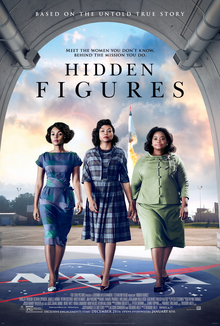
Figure 5. Promotional poster for the movie Hidden Figures. Wikipedia.
Numbers, Infinity, and Reality: An Interdisciplinary Undergraduate Philosophy of Mathematics Course – Assignments and Assessment
In both versions of the course Numbers, Infinity, and Reality, grades are determined primarily by essay assignments, with a small percentage of overall grades dedicated to participation. Although mathematical problem sets are used during class sessions, they are not collected for grades but do constitute part of class participation. The honors version of the course features longer, more comparative essays, while the non-honors assignments were brief reflection-style essays. In the honors iteration of the course we also administer a cumulative final examination with the aim of assessing accurate use of terminology, broad comprehension of main debates and authors, and sufficient grasp of basic mathematical concepts pertaining to the course themes.
Reflection Essays
In addition to simple reading responses (one-page written reactions to readings), the non-honors iteration of the course focuses on five 2–3 page “reflection" essays. For these assignments we ask students to respond creatively and analytically to prompts distributed ahead of time. Some examples of prompts are given below.
- Concisely articulate what you take to be the Pythagorean and/or Platonist view of what math is and how mathematical knowledge is produced. Your characterization should leverage a close reading of one specific passage from one of the relevant texts. What do you think is the most attractive aspect of this view and why? What do you think is one challenge or objection to it, and how might proponents of the view defend themselves?
- Select one of the anti-realist metaphysical views of math we have considered and concisely state what this view involves. Then juxtapose this view with another metaphysical view of math we have also considered (whether anti-realist or not) and either argue why one view is superior to the other, or else show how there might be common ground between the two otherwise opposing views. Your discussion of each view should be informed by close reading of relevant passages from texts representing each of the views you’re discussing.
- Concisely articulate Euclid’s approach to mathematical axioms and undefined terms and then the modern approach to these concepts found in the texts of Russell and Greenberg. Discuss similarities in the two approaches and notable differences between them. Which approach do you find more natural and why? Which do you find more practical? Your discussion should cite specific axioms and terms in the relevant passages from texts representing each approach.
- Drawing upon commentary from Russell and Hilbert, discuss challenges posed to mathematicians by the concept of the infinite. What questions about infinite collections have mathematicians sought to resolve? Concisely articulate the difference between the infinite size of the collection of natural numbers and the infinite size of the collection of real numbers. Do you find this distinction to be practical or only ideological? Your discussion of practicality should be informed by close reading of the relevant texts.
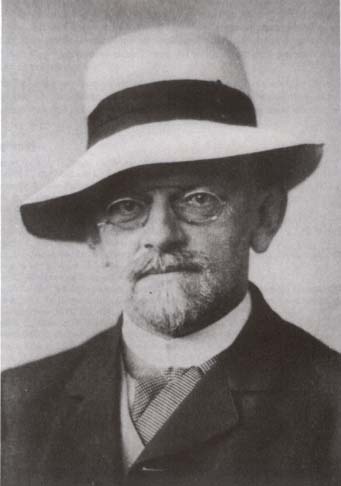
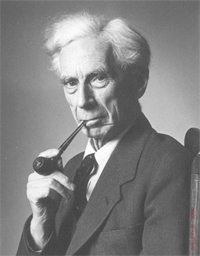
Figure 6. David Hilbert (left) and Bertrand Russell (right). Convergence Portrait Gallery.
Illustrative Essays
“Illustrative” essays assigned to students in the honors version of the course are designed to showcase student understanding of the debates, theories, and texts from the course syllabus. Rather than providing a prompt for the students, we task them with identifying one of the central debates or issues that have been examined in class and composing a five-page essay in which they explicate that topic. We emphasize that students should showcase two of the relevant readings in order to inform their illustration of the topic. We are clear that students should not attempt to evaluate which theory or viewpoint is more correct or incorrect and thus should avoid defending their own perspective regarding the debates or the viewpoints.
Thesis Essay
In the final weeks of the honors course we ask students to compose an eight-page argumentative essay in which they defend their own conclusions about some particular question or debate within the interdisciplinary space between mathematics and philosophy. We warn students that they should not attempt to connect their thesis to every single reading or viewpoint; rather, we encourage them to home in on some specific aspect. Frameworks for successful essays include, but are not limited to: (1) defending one view from an objection that a rival view makes against it; (2) revealing some point of constructive similarity between two otherwise different views; or (3) showcasing a potential problem or limitation internal to a view.
Final Examination
The honors course final exam is cumulative and assesses comprehension of basic terminology, historical context, logical techniques, and the relative pros and cons of key theories within the philosophy of mathematics. The purpose of this exam is to ensure sufficient breadth of engagement with the syllabus texts, whereas the essay assignments described above aim more at encouraging depth of student engagement. In Spring 2021 our final exam consisted of twenty questions in multiple choice, matching, or true/false formats. Roughly half of the questions were focused on texts that were more strictly mathematical, while the other half addressed strictly philosophical texts. Of course, most of the questions were ultimately in the intersection between mathematical and philosophical content. Sample questions include asking students: (1) to identify items that Euclid assumed without proof, featuring options such as the claim that ellipses always intersect (incorrect) or that circles are completely determined by a radius and a center point (correct); or (2) to select from a list the proposition that best summarizes Gödel's attitude toward Cantor's Continuum Hypothesis, featuring options such as that it can neither be proven true nor proven false (correct) or that it can be proven both true and false, rendering it incoherent (incorrect).
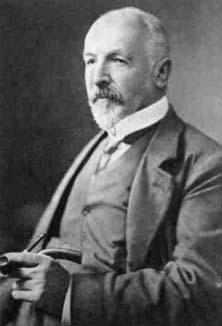
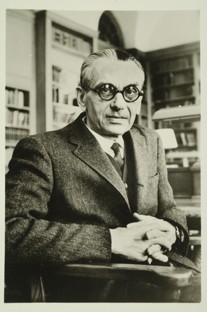
Figure 7. Georg Cantor (left) and Kurt Gödel (right). Convergence Portrait Gallery.
Numbers, Infinity, and Reality: An Interdisciplinary Undergraduate Philosophy of Mathematics Course – Reflections
In both iterations of the course Numbers, Infinity, and Reality, it has been especially rewarding (and often amusing!) to acknowledge and share the various assumptions that different student constituencies may harbor regarding their peers. Philosophy and general education students, for instance, often labor under math-phobias, while math students may be wary of humanistic methods. We have found that explicitly addressing such stereotypes and preconceptions contributes to an air of openness and camaraderie amongst the students.
For our part, as instructors, it was extremely edifying to get the chance to learn from each other. We found that we were often in the position of students ourselves, learning right alongside the undergraduates. Such a re-figuring of the instructor's role, we believe, provides students with an important model of the diversity of disciplinary expertise, the value of intellectual humility, the capacity for lifelong learning, and the benefits of discourse across academic boundaries. We have enjoyed the course so much that we plan to offer it semi-regularly moving forward.
Several student remarks on the course evaluation indicated that the course was effective. We humbly provide one such example:
I loved this class so so much. I came into the class hoping I would learn a bit about math and a bit about philosophy, and I feel like I came out with my life changed. We discussed educational reform, social justice and stereotyping, tragedy and romanticism in mathematics, beauty and elegance, crocheting as a medium for complex mathematical models, and so much more. . . . There were some days, when I truly felt like I was participating in an academic community with curious and enthusiastic peers, that I almost felt like crying from joy. This is why I came to college!
We have observed additional evidence of the course’s impact on students, such as requests for directed independent study courses in related areas. A couple of the student participants continued on to PhD programs in mathematics or philosophy after graduation from Converse.
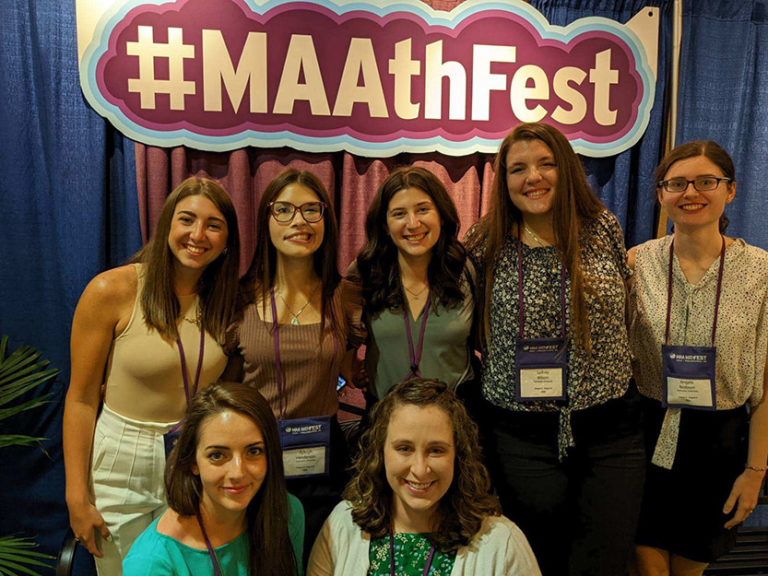
Figure 8. Sorrells with Converse mathematics students—including some participants in
Numbers, Infinity, and Reality—who presented a talk and a poster at MathFest 2022.
Nisbet Honors Program, Converse University.
There are many avenues for potential improvement of this course. While the course in its current form includes much open discussion among the students, all of the primary assignments were completed by individuals. A more collaborative approach, such as group projects or presentations, could bring further depth to the students' understanding and sense of camaraderie. Transferring additional ownership over the course material to the students creates an opportunity for them to present their work at conferences in either discipline. Finally, while texts and videos such as those by Alexander and Williams certainly spark discussions of diversity and inclusion, we plan to further bolster this aspect of the course by identifying and integrating new readings and in-class activities. Our objective is to involve more diverse perspectives, including intercultural and global histories of mathematics, political trends driving educational reforms, and the power dynamics that undergird inclusion and exclusion within the mathematical community.
Numbers, Infinity, and Reality: An Interdisciplinary Undergraduate Philosophy of Mathematics Course – Appendix: Course Texts
Readings for each of the five units of the course are as follows, listed in the order assigned.
Historical Foundations
Pythagoras. n.d. Selected Fragments. In A Presocratics Reader: Selected Fragments and Testimonia, edited by Patricia Curd and translated by Richard McKirahan and Patricia Curd, 23–30. 2nd ed. Indianapolis: Hackett Publishing, 2011.
Plato. n.d. Meno 80A-98B. Translated by W. R. M. Lamb. In Plato: Meno and Phaedo, 79–97. Cambridge Texts in the History of Philosophy. Cambridge: Harvard University Press, 1990.
Lloyd, G.E.R. 2009. Mathematics. In Disciplines in the Making: Cross-Cultural Perspectives on Elites, Learning, and Innovation, 28–57. New York: Oxford University Press.
Metaphysics and Epistemology
Benacerraf, Paul. 1965. What Numbers Could Not Be. Philosophical Review 74:47–73. Reprinted in Philosophy of Mathematics: Selected Readings, edited by Paul Benacerraf and Hilary Putnam, 272–294. 2nd ed. Cambridge: Cambridge University Press, 1983.
Kalderon, Mark. 1996. What Numbers Could Be (And, Hence, Necessarily Are). Philosophia Mathematica 3: 238–255.
McLarty, Colin. 1993. Numbers Can Be Just What They Have To. Nous, 27(4): 487–498.
Benacerraf, Paul. 1965. Mathematical Truth. Journal of Philosophy 70: 661–680. Reprinted in Philosophy of Mathematics: Selected Readings, edited by Paul Benacerraf and Hilary Putnam, 403–420. 2nd ed. Cambridge: Cambridge University Press, 1983.
Parsons, Charles. 1979. Mathematical Intuition. Proceedings of the Aristotelian Society 80: 145–168.
Cheyne, Colin. 1997. Getting in Touch with Numbers: Intuitionism and Mathematical Platonism. Philosophy and Phenomenological Research 57(1): 111–125.
Resnik, Michael. 1975. Mathematical Knowledge and Pattern Cognition. Canadian Journal of Philosophy 5(1): 25–39.
Katz, Jerrold. 2002. Mathematics and Metaphilosophy. Journal of Philosophy 99(7): 362–390.
Kitcher, Philip. 1975. Kant and the Foundations of Mathematics. Philosophical Review 84(1): 23–50.
Lakoff, George and Rafael Núñez. 2000. Where Mathematics Comes From (excerpts). New York: Basic Books.
Axiomatization
Euclid. n.d. Definitions 1–23 and Postulates 1–5 from The Elements, Book I. Translated by Thomas Heath. Reprint; New York: Dover Publishing, 1956.
Greenberg, Marvin. 2008. Euclidean and Non-Euclidean Geometries: Development and History. 4th ed. New York: W.H. Freeman & Co.
Russell, Bertrand. 1919. Introduction to Mathematical Philosophy (selections). Reprinted in Philosophy of Mathematics: Selected Readings, edited by Paul Benacerraf and Hilary Putnam, 160–182. 2nd ed. Cambridge: Cambridge University Press, 1983.
Corry, Leo. 2008. The Development of the Idea of Proof. In The Princeton Companion to Mathematics, edited by Timothy Gowers, 129–142. Princeton: Princeton University Press.
Hilbert, David. 1926. Über das Unendliche (On the Infinite). Mathematische Annalen 95: 161–190. English translation by Erna Putnam and Gerald J. Massey. Reprinted in Philosophy of Mathematics: Selected Readings, edited by Paul Benacerraf and Hilary Putnam, 183–201. 2nd ed. Cambridge: Cambridge University Press, 1983.
Gödel, Kurt. 1947. What is Cantor’s Continuum Problem? The American Mathematical Monthly 54: 515–525. Revised and expanded version in Philosophy of Mathematics: Selected Readings, edited by Paul Benacerraf and Hilary Putnam, 470–485. 2nd ed. Cambridge: Cambridge University Press, 1983.
Cross-disciplinary Relationships
Hardy, G. H. 1967. Mathematician’s Apology. Cambridge: Cambridge University Press.
Wigner, Eugene. 1960. The Unreasonable Effectiveness of Mathematics in the Natural Sciences. Communications in Pure and Applied Mathematics 13(1):1–14.
Sociological Implications
Alexander, Amir. 2006. Tragic Mathematics: Romantic Narratives and the Refounding of Mathematics in the Early Nineteenth Century. Isis 97: 714–726. DOI: 10.1086/509952.
Colyvan, Mark. 2002. Mathematics and Aesthetic Considerations in Science. Mind 111(441): 69–74.
Numbers, Infinity, and Reality: An Interdisciplinary Undergraduate Philosophy of Mathematics Course – References, Acknowledgments, and About the Authors
References
Alexander, Amir. 2006. Tragic Mathematics: Romantic Narratives and the Refounding of Mathematics in the Early Nineteenth Century. Isis 97: 714–726. DOI: 10.1086/509952.
Benacerraf, Paul. 1965. What Numbers Could Not Be. Philosophical Review 74: 47–73. Reprinted in Philosophy of Mathematics: Selected Readings, edited by Paul Benacerraf and Hilary Putnam, 272–294. 2nd ed. Cambridge: Cambridge University Press, 1983.
Greenberg, Marvin. 2008. Euclidean and Non-Euclidean Geometries: Development and History. 4th ed. New York: W.H. Freeman & Co.
Wertheim, Margaret. 2009. The Beautiful Math of Coral. TEDEd TED Talk Lessons.
Williams, Talithia. 2014. Own Your Body’s Data. TEDxClaremont Colleges.
Acknowledgments
This course could not have succeeded without the fantastic student cohorts we had in Winter 2019 and Spring 2021. We also gratefully acknowledge the support from Converse University’s Nisbet Honors Program as well as a High-Impact Practices Fellowship Grant from Converse. And we are indebted to the editors and two anonymous referees for their diligence and guidance.
About the Authors
Kevin DeLapp is the Fleming Professor of Philosophy at Converse University. He teaches across the philosophy curriculum, and his primary fields of scholarship are classical Chinese philosophy and metaethics.
Jessica Sorrells is an Associate Professor of Mathematics at Converse University. Her research areas include mathematical modeling of DNA self-assembly and voting theory.